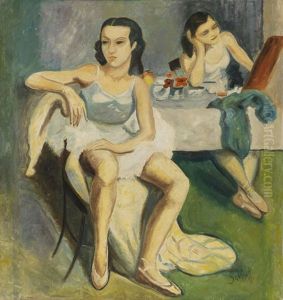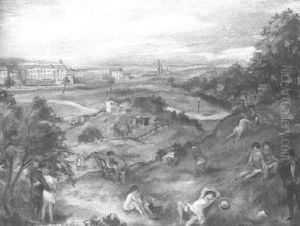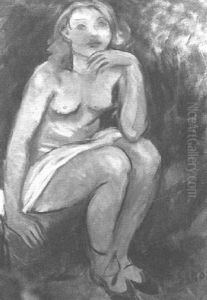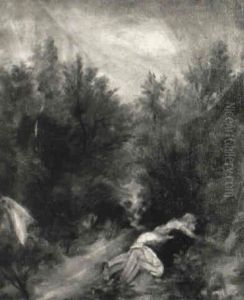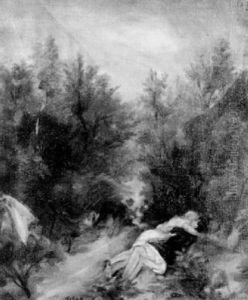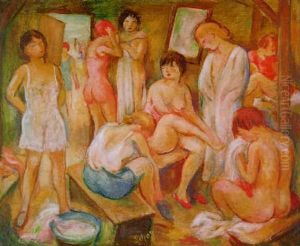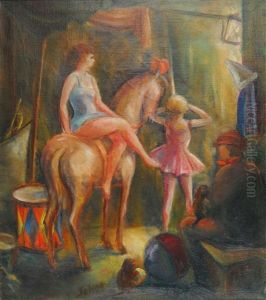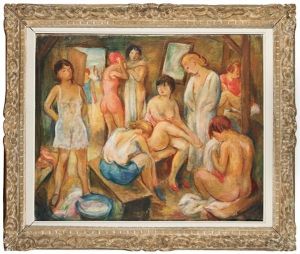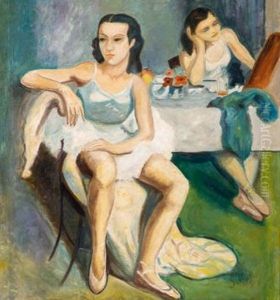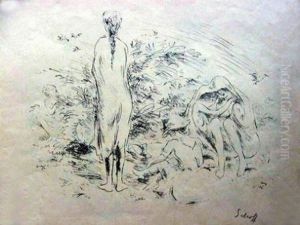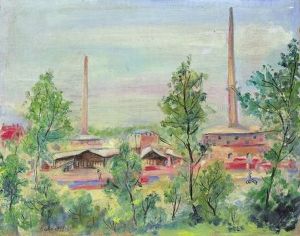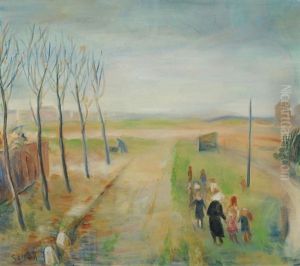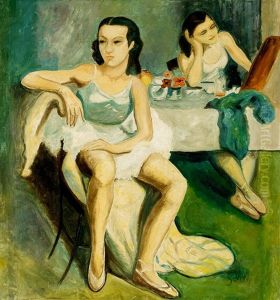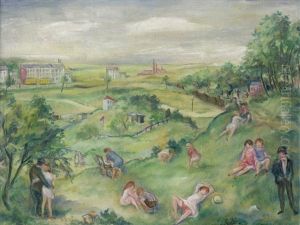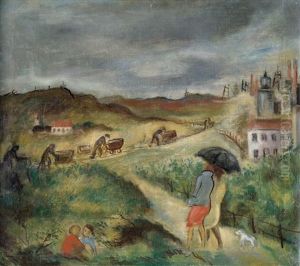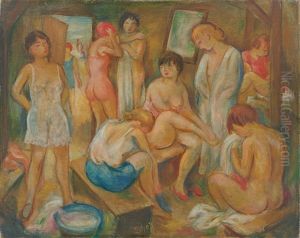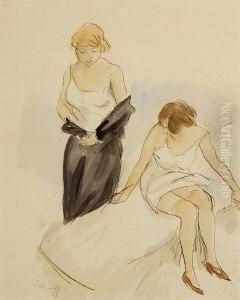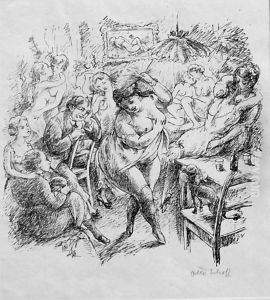Otto Schoff Paintings
Otto Schoff, a German artist and illustrator, was born in 1884 in Bremen, and his career spanned the early 20th century, a period marked by significant artistic innovations and the tumult of the First World War. Schoff was primarily known for his work as a graphic artist, illustrator, and etcher, embodying the spirit of German expressionism and the Jugendstil movement, the German counterpart to Art Nouveau. His style combined intricate detail with bold compositions, often exploring themes of mythology, history, and nature.
Educated in the arts in Germany, Schoff furthered his studies in Paris, where he was exposed to the forefront of avant-garde art movements. This exposure is evident in the evolution of his style, which integrates elements of French Art Nouveau with German artistic traditions. Throughout his career, Schoff was involved in various artistic communities, contributing to the vibrant cultural exchanges that characterized the European art scene at the time.
Schoff's contributions to the field of graphic arts were significant, with his etchings and illustrations being celebrated for their technical skill and artistic imagination. He was adept at capturing the essence of his subjects, whether in his depictions of human figures, landscapes, or scenes from mythology and literature. Despite the acclaim he received during his lifetime, Otto Schoff remains a somewhat underappreciated figure in the broader context of 20th-century art history.
The rise of the Nazi regime in Germany cast a shadow over the latter part of Schoff's career. The oppressive political environment and the regime's strict control over artistic expression limited his opportunities and may have influenced the themes and methods of his later works. Otto Schoff died in 1938 under the shadow of this regime, leaving behind a body of work that continues to be studied for its contribution to the development of modern graphic arts and illustration in Germany.
